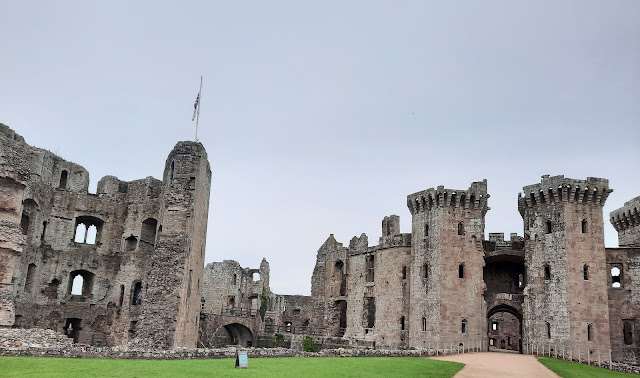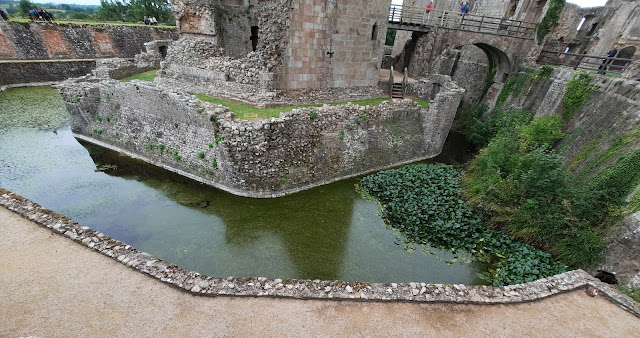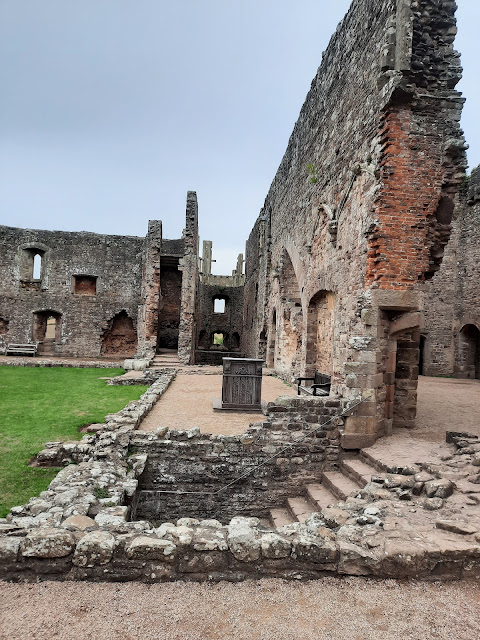As Hubby and I are now in our third year of membership with English Heritage we can enjoy free admission to all properties in Wales (CADW), Scotland (Historic Scotland) and OPW (Ireland).
On our recent trip to Cardiff we visited Tintern Abbey, Chepstow Castle and Raglan Castle. I have blogged each property separately and although my photos show just how superb the properties are I have added notes taken from the Cadw website.
Our third visit was to Raglan Castle.
Raglan Castle stands high on a ridge in the glorious Welsh countryside and is the grandest castle ever built by Welshmen.
Sir William ap Thomas, known as the ‘blue knight of Gwent’, was responsible for the moated Great Tower of 1435 that still dominates this mighty fortress-palace. However it was his son Sir William Herbert, Earl of Pembroke, who gave created the Raglan Castle that still stands today.
In less than 10 years Sir William became the most powerful Welshman at the time. He had a dazzling career fighting in France, where he was captured and ransomed, and was knighted in 1452. He grew rich by importing Gascony wine and was made Sheriff of Glamorgan and Constable of Usk Castle. He played a crucial role in a decisive defeat of Lancastrian forces during the Wars of the Roses in 1461.
The grateful new king Edward IV rewarded Sir William by making him Chief Justice and Chamberlain of south Wales – and grandly styled him Baron Herbert of Raglan. The young Henry Tudor, the future King Henry VII, was sent to Sir William to be brought up at Raglan Castle.
Sir William’s final accolade, in 1468, was when he was created Earl of Pembroke as a reward for his capture of Harlech Castle, the last Lancastrian stronghold in England and Wales. It made him the first member of the Welsh gentry to enter the ranks of the English peerage.
Unfortunately he was defeated and captured at the battle of Edgecote in 1469 – and brutally beheaded the very next day. The reported death of 5,000 men, mostly Welshmen, in his army makes it one of Wales’s greatest losses in battle. His body was brought back to south east Wales and buried in the Cistercian Abbey church at Tintern.
Under various Earls of Worcester Raglan was then transformed into a magnificent country seat with a fashionable long gallery and one of the finest Renaissance gardens in Britain.














No comments:
Post a Comment